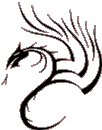POINT: LI-15 (LARGE INTESTINE-15)
| English: | Shoulder Bone |
| Also Known As: | Shoulder Joint Shoulder Transporting Point Shoulder's Corner |
- Anteroinferior to the acromion, on the upper portion of the deltoid muscle. When the arm is in full abduction, the point is in the depression appearing at the anterior border of the acromioclavicular joint.
- Located directly inferior to the anterior border of the acromion where a depression is formed when the arm is abducted.
- In the middle of the upper part of the deltoid muscle at the shoulder, between the acromion and greater tubercle of the humerus. when the arm is abducted parallel to the ground, this point can be found in the distinct depression just in front of the shoulder.
- In the depression which lies anterior and inferior to the acromion, at the origin of the deltoid muscle.
Note: SJ-14 Jianliao is located in the depression which lies posterior and inferior to the acromion. If the arm is abducted, the two hollows will be more easily palpable and are often visible. - When the arm is in full abduction, the point is in the anterior depression of the two depressions appearing at the anterior border of the acromioclavicular joint.
- Puncture perpendicularly or obliquely 0.8 to 1.5 cun.
- Moxibustion is applicable.
- Straight insertion, with the arm raised, needle pointed toward HT-1 Jiquan in the armpit, 2 to 3 cun.
- For supraspinatus tendinitis: with arm hanging freely at the side, insert the needle between the acromion of the shoulder and the greater tubercle of the humerus, 0.7 to 1 cun. Sensation: local distention and soreness, sometimes extending to the forearm.
- Slanted insertion, for perifocal inflammation of the shoulder joint, join to M-UE-48 Jianneiling, then to SJ-14 Jianliao and finally along the deltoid muscle, 2 to 3 cun. Sensation: distention and soreness spreading through the shoulder, or an electric sensation extending toward the forearm.
- Transverse insertion, for limited abduction of the shoulder, needle pointed downward along the deltoid muscle, 2 to 3 cun. Sensation: distention and soreness in the upper arm.
- With the arm abducted, perpendicular insertion directed towards the center of the axilla, 1 to 1.5 cun.
- Transverse-oblique insertion directed distally towards the elbow 1.5 to 2 cun.
- Point of the Yang Qiao channel
- Eliminates Wind
- Brings down Heat
- Benefits the sinews
- Promotes the circulation of Qi in the channels
- Stops pain
- Dispels Wind-Damp
- Alleviates pain
- Benefits the shoulder joint
- Regulates Qi and Blood
- Regulates Qi and dissipates Phlegm nodules
|
|
LI-5 |
SJ-14 |
LI-14 |
Wind rash Urticaria from extreme Heat |
Shoulder problems |
Wasting and weakness of the arm with inability to raise the arm to the head |
LU-5 |
||
Redness and swelling of the upper arm with pain of the joint |
Heat sensation of the shoulder with inability to turn the head |
Contraction of the elbow |
GB-39 |
|
|
Windstroke with one-sided withering and incessant pain |
|
|
- Have the patient extend the arms out to the side and move the arms in small circles to stimulate this area and bring down high blood pressure.
- This is a major point for the treatment of Bi syndrome of the shoulder, atrophy syndrome and paralysis of the arm.
- this point is also reached by the Lung and Bladder sinew channels, the Large Intestine divergent channel and the Small Intestine Luo- Connecting channel.
- It is considered the pre-eminent point for treating the shoulder.
- It has wide repercussions and remarkable curative effect.

